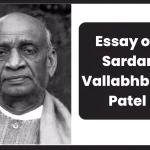Indian States and Capitals: Rabindranath Tagore once called India to be the epitome of the world. His statement hinted at the beautiful amalgamation of diverse cultures co-existing in a single subcontinent. Presently, the diverse nation of India is politically divided into 28 states and 8 Union Territories. The latest list of Indian States and the Indian State Capitals is given in this article for general knowledge purposes. Make sure to read the article till the end to find out the latest information on the topic.
Indian States and Capitals
There are 28 states and 8 Union Territories in the province of India. This statistic was formed after Jammu & Kashmir’s status was upgraded to that of a Union Territory in the year 2019. In addition, the UTs of Daman and Diu & Dadra Nagar Haveli were also united on the 26th of January 2020. The list of all the Indian States & Indian State capitals as well as Union Territories and their capitals are provided in the next section.

History of Indian States formation
Until 1947, when India was under the rule of the British, the country consisted of 562 small geographical compartments called princely states. After gaining its independence, the nation needed a geographical and political structuring of the country. This need gave birth to the formation of Indian states.
In 1948, during the early discussions on the development of the Constitution of India, S.K Dhar proposed an idea of state formation on the grounds of the dialects spoken in the country. This idea was formerly rejected but after various committee formations & protests (mostly due to the death of Potti Sriramalu due to his hunger strike protest) the idea was accepted. And, finally, in the year 1953, the birth of first Indian state on the basis of language took place with the formation of Andhra Pradesh.
Need for a State Capital
Wherever there is a political province, there is also a need for governmental administration. And for the smooth functioning of any state, it is necessary to have an administrative body to regulate the state system. This necessity was realized long before the formation of a constitution during the reign of kings. Presently, each state of India has a city assigned as the capital to ensure the safety and regulation of the citizens.
The list of all the Indian states along with their established dates and capitals are listed in the next section of this article.
List of All Indian States & Their Capitals
India regained its status of 28 states on the 5th of August 2019, after the revocation of Article 370 from the former state of J&K. This took place under the establishment of the Jammu & Kashmir Reorganization Act 2019. Here is the complete list of Indian States and capitals.
| Name of State | Capital Name | Established |
| Andhra Pradesh | Amaravati | 1/11/1956 |
| Arunachal Pradesh | Itanagar | 20/02/1987 |
| Assam | Dispur | 26/01/1950 |
| Bihar | Patna | 26/01/1950 |
| Chhattisgarh | Naya Raipur | 11/01/2000 |
| Goa | Panaji | 30/05/1987 |
| Gujarat | Gandhinagar | 1/05/1960 |
| Haryana | Chandigarh | 1/11/1966 |
| Himachal Pradesh | Shimla | 25/01/1971 |
| Jharkhand | Ranchi | 15/11/2000 |
| Karnataka | Bangalore | 1/11/1956 |
| Kerala | Thiruvananthapuram | 1/11/1956 |
| Madhya Pradesh | Bhopal | 1/11/1956 |
| Maharashtra | Mumbai | 1/05/1960 |
| Manipur | Imphal | 21/01/1972 |
| Meghalaya | Shillong | 21/01/1972 |
| Mizoram | Aizawl | 20/02/1987 |
| Nagaland | Kohima | 1/12/1963 |
| Odisha | Bhubaneswar | 26/01/1950 |
| Punjab | Chandigarh | 1/11/1956 |
| Rajasthan | Jaipur | 1/11/1956 |
| Sikkim | Gangtok | 16/05/1975 |
| Tamil Nadu | Chennai | 26/01/1950 |
| Telangana | Hyderabad | 2/06/2014 |
| Tripura | Agartala | 21/01/1972 |
| Uttar Pradesh | Lucknow | 26/01/1950 |
| Uttarakhand | Dehradun, Gairsain (Summer) | 9/11/2000 |
| West Bengal | Kolkata | 1/11/1956 |
Concept of Union Territory in India
UT is a small governmental division which is directly regulated by the Union government of India. The UTs are governed by a Lieutenant Governor who is chosen by the President of India themselves. In India, few UTs consist of a legislative council while some do not. On this basis, the Indian Union territories can be divided into 2 categories:
- UTs with legislature
- UTs without legislature
Presently, the Indian subcontinent has a total of 8 union territories after the merging of Dadra Nagar Haveli & Daman & Diu into a single UT. The complete list of Indian UT along with their capitals, the status of their legislature and the establishment date is provided in the next section.
List of All Indian Union Territories and their Capitals
This is the latest list of all 8 Union Territories along with their capitals and the details about the presence of a legislative body and the establishment year.
| Name of UT | Capital Name | Presence of a Legislature | Established |
| Andaman and Nicobar Islands | Port Blair | No | 1/11/1956 |
| Chandigarh | Chandigarh | No | 1/11/1966 |
| Dadra Nagar Haveli and Daman Diu | Daman | No | 26/01/2020 |
| Delhi | New Delhi | Yes | |
| Jammu and Kashmir | Srinagar (Summer), Jammu (Winter) | Yes | 31/10/2019 |
| Ladakh | Leh | No | 31/10/2019 |
| Lakshadweep | Kavaratti | No | 1/11/1956 |
| Puducherry | Puducherry | Yes | 1/11/1954 |
What is the difference between a State and a Union Territory in India?
The major difference between a state and a union territory is that of their administrative bodies. While a state has their own administrative body, a Union Territory is regulated directly by a federal body of central government.
When was Jammu & Kashmir made a Union Territory?
The Jammu & Kashmir Reorganization Act 2019 took effect on 31 October 2019.
How many Indian States & Union Territories are there?
There are 28 Indian States & 8 Union Territories in 2024. A detailed list of them is available on our website.






